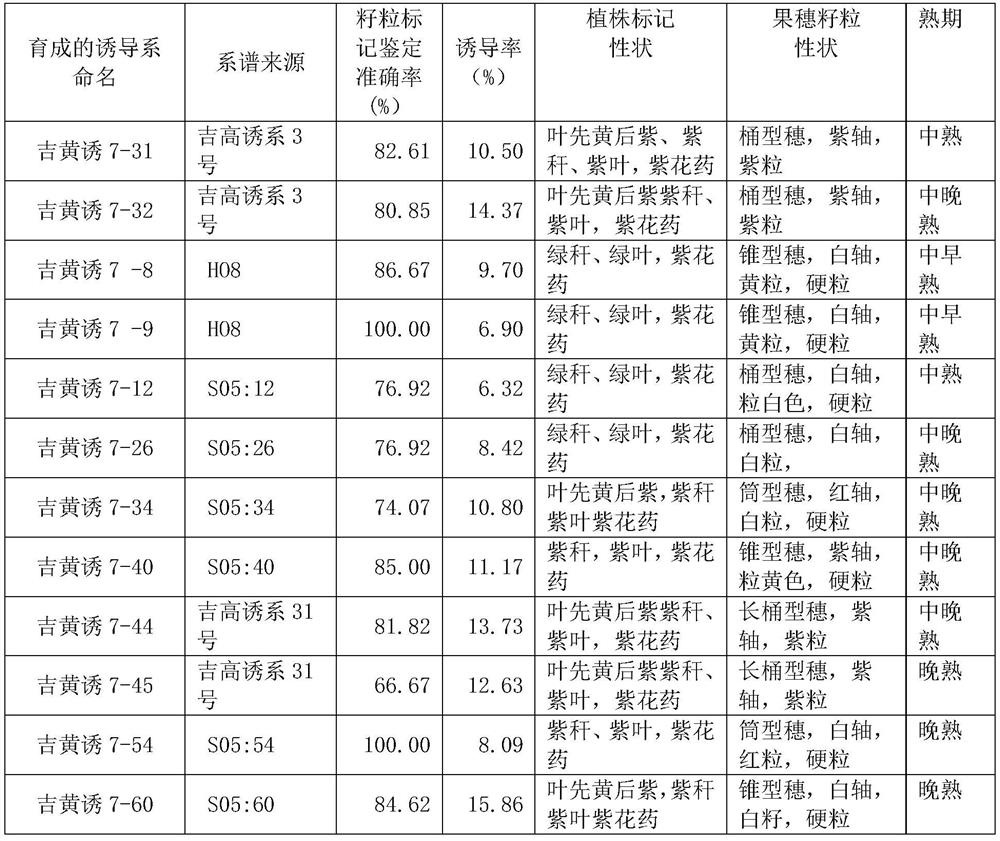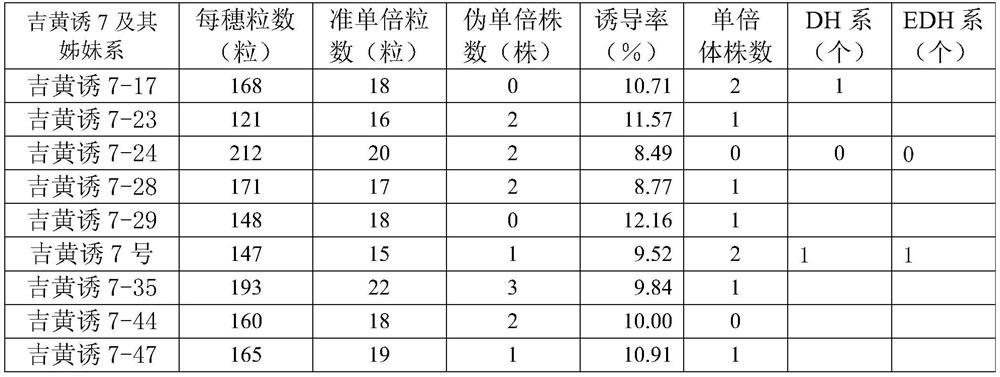A Breeding Method Using Yellow-green Seedling Markers to Breed Early Doubled Haploids in Maize
A technology for doubling haploid, yellow-green seedlings, applied in the directions of botanical equipment and methods, application, plant genetic improvement, etc., can solve the waste of manpower, material resources, financial resources and time, poor haploid grain identification accuracy, identification Time delay and other problems, to achieve the effect of avoiding light shading, saving manpower, and reducing ineffective labor
- Summary
- Abstract
- Description
- Claims
- Application Information
AI Technical Summary
Problems solved by technology
Method used
Image
Examples
Embodiment 1
[0040] Embodiment 1 Genetic analysis and positioning of the yellow-green seedling gene Yg3 of the present invention
[0041] (1) In the summer of 2012, the material code-named 523DYg3-N1528 was planted in Gongzhuling, Jilin (or called, quoted from the American Corn Genetic Resources Conservation Center in 2011, the same below); 523DYg3-N1528 was pollinated by the pollen of Gaoyu Line 31 (all bred by Jilin Academy of Agricultural Sciences) and obtained F 1 Generation combinations (523DYg3-N1528╳Jigaoyu Line 3 is coded as Combination 1, 523DYg3-N1528╳Jigaoyu Line 31 is numbered as Combination 2) each with 2 spikes.
[0042] (2) In the winter of 2012, F 1 Substitute 1 line each, F 1 The first generation seedlings began to show very obvious yellow-green leaves at the 3-5 leaf age (light green seedlings, light green plants, yellow-green leaves, mainly yellow, supplemented by green), and Jigaoyu 3 and Ji The leaf color difference of Gaoyin 31 was extremely large, and the green co...
Embodiment 2
[0048] Embodiment 2 Utilizes the backcrossing method to cultivate the haploid induction line test with the yellow-green seedling marker
[0049] Proceed as follows:
[0050] (1) In the summer of 2012, 523DYg3-N1528 (non-recurrent parent) with yellow-green seedling markers and the haploid induction line Jigaoyue Line 3 (recurrent parent) were planted at the same time in Gongzhuling City, Jilin Province. 523DYg3-N1528 is yellow-green at the seedling stage and grows normally. After heading, the difference between yellow-green and normal green plants gradually becomes smaller; at the flowering stage, 523DYg3-N1528 is pollinated with Jigaoyuxi 3, and the hybrid F 1 generation seeds.
[0051] (2) In the winter of 2012, F was planted in Hainan 1 generation, at the same time, plant Jigaoyu Line 3; use Jigaoyu Line 3 as the male parent in the flowering stage, and give F 1 Pollination of strong and healthy plants; when harvesting, mix and thresh and select grains with obvious Navajo ...
Embodiment 3
[0061] Example 3: Breeding early doubled haploid experiment of maize using Jihuangyouxi No. 7 and its sister lines
[0062] Proceed as follows:
[0063] (1) In 2016, in Gongzhuling, Jilin Academy of Agricultural Sciences Haploid Seed Nursery, two commercial products were Jingke Nuo 928 (gifted by Beijing Academy of Agriculture and Forestry Sciences) and Yikou Sanxiang (gifted by Shandong Denghai Seed Industry). Fresh corn hybrids were used as the basic population, and the haploid induction line Jihuangyuxian No. 7 and its sister lines (see Table 3 and Table 4) cultivated in Example 2 with yellow-green seedling markers were used as male parents, respectively. Jingke Nuo 928 and Yikou Sanxiang were pollinated "one-to-one" for a single ear, and the upper ear of the female plant was harvested, and the "quasi-haploid" was screened according to the Navajo marker traits of the aleurone layer at the top and colorless germ tip. grain.
[0064] (2) In the winter of 2016, at the base o...
PUM
 Login to View More
Login to View More Abstract
Description
Claims
Application Information
 Login to View More
Login to View More - R&D Engineer
- R&D Manager
- IP Professional
- Industry Leading Data Capabilities
- Powerful AI technology
- Patent DNA Extraction
Browse by: Latest US Patents, China's latest patents, Technical Efficacy Thesaurus, Application Domain, Technology Topic, Popular Technical Reports.
© 2024 PatSnap. All rights reserved.Legal|Privacy policy|Modern Slavery Act Transparency Statement|Sitemap|About US| Contact US: help@patsnap.com










